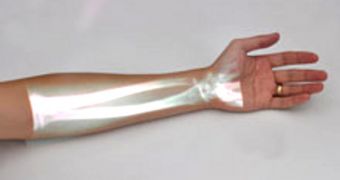Scientists at the Redmond, Washington-based Microsoft Research Computational User Experiences Group have developed a new device that can be used to project a view of damage the bodies of patients suffered onto their skin.
Physicians hope that seeing the extent of their inner injuries would motivate patients to continue doing their exercises and therapies for the amount of time doctors prescribe. Usually, many people stop upon experiencing the first symptoms of improvement.
This is detrimental to their health, and healthcare providers are convinced that this is happening because patients have no idea about what's going on underneath their skins. The new device is therefore aimed primarily at physical-therapy patients.
Previous studies have demonstrated that people are more likely to respond to a necessity if they can understand it, relate to it, and monitor it over a period of time. This is precisely what Microsoft Research sought to provide via its new handheld instrument.
Official statistics estimate that between 30 and 50 percent of all patients suffering from chronic conditions do not comply with their physicians' requirements. However, they only end up hurting themselves and their families in the process.
“People are notoriously bad at sticking to their physical therapy regimens,” CUEG expert Amy Karlson explains. She adds that this behavior causes injuries to recover slower than usual. In some cases, this approach to therapy might even exacerbate the damage.
The AnatOnMe device is meant to provide individuals with an objective view of what's going on inside their bodies. What it does is project relevant data on bone structure, muscle tissue, tendons, or nerves onto the user's skin.
Expert E. Anne Reicherter believes that many patients are unwilling to do exercise because this could imply having to forgo a series of habits that potentially led to the development of the injury in the first place, Technology Review reports.
The expert is a member of the American Physical Therapy Association, which is based at the University of Maryland-Baltimore School of Medicine.
“But most patients are very interested in understanding what's going on in their body, so something like this that can visually assist them in truly understanding would be a real benefit,” she comments.

 14 DAY TRIAL //
14 DAY TRIAL //